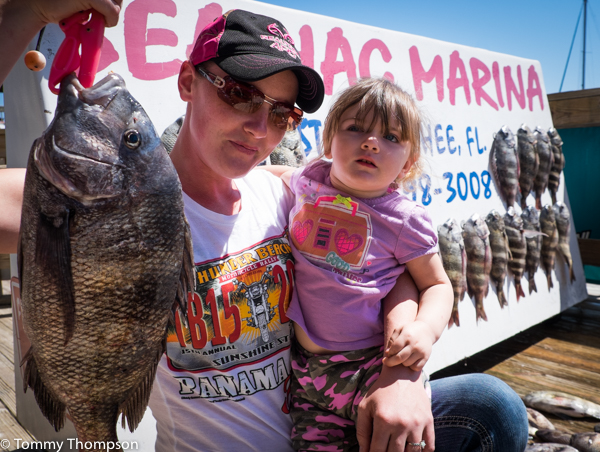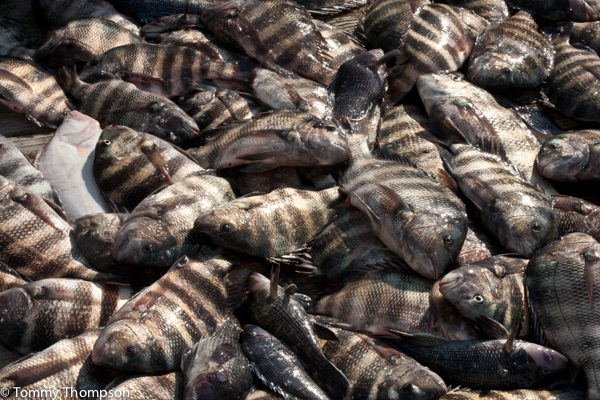Sheepshead Providing Great Fishing Action and Eating on Florida’s Big Bend, Spring 2016

First, they’re officially sheepShead, but many Floridians call them sheephead, with out the “S”.
and what’s more, sheepshead, found all along Florida’s Gulf coast, are notorious bait stealers. During most of the year, these small-mouthed fish inhabit coastal oyster and rock bars, docks and rock jetties searching for their favorite prey—crustaceans, including small crabs, shrimp and even barnacles. It’s these smaller fish that are very difficult to catch, as their ability to crush bait, swallow the meat, and spit out the exoskeleton (with your hook) is unrivaled. Small hooks and small baits, such as fiddler crabs and cut shrimp pieces, are the key to catching sheepshead close to shore. Patience helps, too. Learning to feel the signature bite of a sheepshead takes time, and you’ll likely miss a few before you get into the rhythm. And, while the size limit on sheepshead currently twelve inches, a fish that size yields very little meat upon cleaning.

There’s no such thing as a “secret spot” anymore!
It’s the bigger spawning sheepshead, usually found during the late winter or spring that excite Big Bend anglers. These fish, found mostly in deeper water and around structures such as rock pies, reefs and old navigation markers, sometime reach weights of 10 pounds or more. When their spawning ritual begins, mature sheepshead will mill around structure and seemingly eat any bait presented them. Chumming with crushed crabs, oysters, barnacles or shrimp heads will increase the feeding frenzy. But don’t over-chum. They’re hungry, but they do get full. Spawning fish are mature, larger fish and their mouths are bigger. Most anglers rely on whole live shrimp as bait. To catch them, a simple knocker rig and a sturdy size 2 hook is sufficient, but many anglers simply thread a shrimp, tail first, onto a 3/8-ounce jig head. The advent of braided fishing line has certainly hurt the sheepshead population in the last few years, allowing anglers a better feel for what’s going on down below. Many sheepshead experts agree that you have to set the hook on a sheepshead before it bites, or you’ll miss the hookup.

Sheepshead are delicious to eat but as difficult to clean as they are to catch. Big-boned and heavily scaled, the meat-to-total-weight ratio of sheepshead is low, and many anglers opt to clean them with electric knives. And, no matter how good the meat, cleaning the unrealistic legal limit is a chore. Take what you can eat that night and not the fifteen-fish limit, remembering that big spawning sheepshead represent the future of that species.

